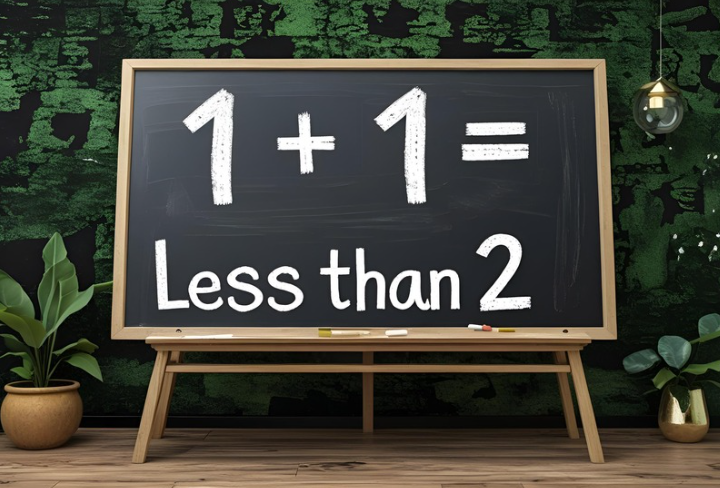1 minute summary
You run the risk of not spending enough time and thought into your supplier decisions because you are busy and anyway Mary, who you met at an HR Roundtable event recommended someone, so you’re all good.
Transformation – be that individual leader/manager, team or the whole organisation – need the right supplier with the right experience, level of innovation and expertise, so you and all those impacted, trust that this has the best chance of succeeding.
Get better at saying “no, not this time” early – it is much more efficient for you and the supplier and it helps avoid using Mary’s word-of-mouth recommendation as a proxy for due diligence.
Your culture is unique. Finding suppliers who can augment that because they are a good fit, gives the project a much better chance of success.
Have a process to walk through when selecting supplier: The Exigence Supplier Identification Diagnostic is one such tool and you can get it free here.
As I move well past 20 years as a supplier to other businesses who are undergoing some kind of change and growth, I spent time at the start of the year reflecting on what I have learned, how to get better at what we do, how we can improve further the experience of our customers and the leaders/managers we work with. One thing that struck me was how often business leaders start a conversation with us, with little clarity over what it is they want from a supplier and what kind of supplier they want to work with.
For all sorts of reasons – I can confidently say workload is a major factor – generally, these senior decision-makers (not you, I’m sure!) have a broad idea of what they are looking for and some insight into the ‘art of the possible’ but little more. If you have found yourself in such a situation, that leaves your success too much to chance and I’m keen to share an approach that I hope will help you find the right suppliers for each opportunity you have during 2023 and beyond.
Committed non-attachment
As a coach I want the leaders we work with to get the best coach they can. Hopefully, that is me or one of our team, but I would much prefer they selected someone else if they felt was a better fit for the work they needed to do. The same holds true for the decision-makers and sponsors such as you: know what you want and be uncompromising in getting it. The work, the time and financial cost and your professional reputation are too important not to do this kind of preparation.
On the surface it may seem counter-intuitive perhaps, to say that we want to hear a customer tell us, “No, it’s not going to be you, we’ve decided to go another way.” But in fact that is the case, most suppliers will want to hear you say that clearly and early in discussions. It is the second-best outcome for us, albeit a distant second place, after, “We loved what you are proposing and we’re keen to get started.” It tells us that you are clear on the impacts you want to achieve and the kind of supplier you want. In short, you have a clear picture of your ideal supplier for the current project. Great.
One last word on this before I share the framework that will help you make great supplier decisions and that is at Exigence, we see it as our duty, if the situation demands it, to say to you, “This isn’t right for us. We are not the best people to help achieve what you want. Let’s help you find a better placed supplier.” We also have a reputation to uphold. We do amazing work with wonderful people and we protect that reputation dearly. That’s why it always saddens me to see too many suppliers, especially newbies to the market, take on work that is not in their sweet-spot because they need the revenue. I get it but that is a recipe for potential disaster for both parties.
I call this approach ‘committed non-attachment.’ We are totally committed to you getting the outcomes and results you want and where we feel we can deliver that for you we will do our best to help you come to that conclusion too. But if we’re not best placed to help, we’re not attached to being your provider over you succeeding.
The Supplier Identification Diagnostic
“Good-fit” is a bit of a vague term although seems to be used increasingly in many domains. So, to help you define a “good fit” supplier, we created the Supplier Identification Diagnostic. The tool starts with helping you define clearly what you need the transformation to achieve and then prompts you to consider 5 areas in more detail:
- experience of the supplier you are looking for
- the cultural fit
- logistics
- confidence in delivery
- relationship
You can get your own copy of the Supplier Identification Diagnostic by clicking here.
Let’s look briefly at each.
The initial decisions you need to make focus on clarity of the project deliverables, timelines, internal sales etc. You may already be very clear on these, in which case great news, you can use this section of the diagnostic as a refresher. If you are not as clear as you might be, this section is the foundation that needs completing before you tackle the rest of the process.
You will get a quick picture that highlights areas yet to be addressed and guiding questions to help you think about the work yet to do.
Next, you get a chance to consider the experience of the supplier you are looking for. For example, in some projects it makes sense that a supplier might have sector knowledge e.g. if you wanted support through an M&A between two solar energy companies. Other work typically does not need that sector knowledge to the same extent e.g. leadership development support or external comms.
After experience, it is time for you to consider cultural fit and the degree to which this is important. A recent example from our work was noticing that many companies are now focusing on the ESG agenda/B-Corp status and so on. If those are areas you are focusing on, the impact maybe that some suppliers are not yet accredited and will no longer be an appropriate fit for your project.
Logistics is an area that seems obvious until you realise you forgot to ask a key question such as, “can you cope with the requirement for global coverage?” It is also the place to spend time thinking about the scale of the supplier you want. There are pros and cons with either end of the size scale: Go Big 4 and you get the resources, reputation and connections; go bespoke and you get more access to the senior people, more innovation and often deeper specific subject expertise.
Results are vital and maximising the chances of success whilst minimising risk are explored next. This area explores the degree to which you want off the shelf solutions or a more tailored approach; ways to mitigate risk e.g. through the terms etc.
Finally, you get a chance to reflect on the relationship you want with the supplier. Is this a one-off piece of work that is transactional in nature or do you want to build a longer-term relationship so you can co-create solutions specifically for your organisation, gain insights from their work that might provide new opportunities for both parties etc.
Over to you
Going through this process will hopefully enable you to have a much clearer idea of your project and the kind of supplier that you are looking for. The decision is rarely straightforward but going through the Supplier Identification Diagnostic will give you the best chance of finding who you need.
You can get your own free version of the Supplier Identification Diagnostic by clicking here.
We’d love to hear your feedback and as you work with the tool any suggestions you may have for amendments that work well for you.
Exigence works with organisations to deliver full-stack HR leadership development solutions, from Executive and senior team coaching to group and AI coaching. If you would like to discuss how we can help you deliver quantifiable impacts for your organisation, we’d love to hear from you – just contact us here.
Posted





